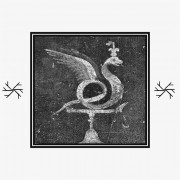Modern science sneers at the notion As above, so below. Nothing could be more wrong, we are told. The tiers are all completely different, and the depths of the sea and the vastness of space couldn’t be more alien to one another.
Even in the case of the only viable exception, the truly universal force of gravity, we learn that its influence is slight: the gravity of an orange on a nearby table affects you more than that of the massive planet Jupiter above.
Yet, all is not gravity. Jupiter sizzles and crackles with electromagnetic activity and cuts swaths of radio bursts towards Earth, like some celestial lighthouse gone haywire. Sheets of current dance an eerie, spectral dance between the major bodies of the solar system, great inductors and conductors, including the Sun, the Moon and the Earth itself.
What all this activity means is, of course, as puzzling as ever. The scientists of today are as addlepated as the alchemists and astrologers of old. Probably even more so. We stand, as did Heraclitus the Obscure, in almost perpetual twilight.
We need to grab onto these fickle strands of dying light. We need to embrace The Arms in Twilight.
The medeival philosophers were right. Man is the center of the universe. We stand in the middle of infinity, between outer and inner space. And there’s no limit to either. — Fantastic Voyage, 1967.
And complete darkness is not upon us just yet. Fend off our mundane modern-day mythology by grabbing a copy of the beautiful, murky, foreboding album Arms in Twilight.

